
The Enchanting Wilderness of Białowieża Forest
Discover the ancient, untouched beauty of Białowieża Forest, a UNESCO World Heritage Site teeming with wildlife and rich in history, on the border of Poland and Belarus.
Białowieża Forest, nestled on the border of Poland and Belarus, is one of the last and largest remaining parts of the primeval forest that once stretched across the European Plain. This ancient woodland is a UNESCO World Heritage Site and is home to a diverse range of flora and fauna, including the iconic European bison, the largest land mammal in Europe. Visitors to Białowieża Forest can explore its vast network of trails, offering a chance to immerse themselves in nature and witness the breathtaking beauty of this untouched wilderness. The forest is a paradise for birdwatchers, with over 250 species of birds, including the rare white-backed woodpecker and the pygmy owl, making it their home. The village of Białowieża, located within the forest, provides a charming base for tourists. Here, you can visit the Białowieża National Park Museum to learn more about the forest's rich history and biodiversity. The village also offers traditional Polish cuisine and comfortable accommodations, making it an ideal spot to unwind after a day of exploration.
Local tips in Białowieża Forest
- Visit during spring or autumn for the best weather and vibrant foliage.
- Hire a local guide to increase your chances of spotting European bison.
- Check for any travel restrictions if planning to cross the border into Belarus.
- Carry insect repellent and wear long sleeves to protect against ticks.
- Make sure to book accommodations in advance, especially during peak season.
The Enchanting Wilderness of Białowieża Forest
Białowieża Forest, nestled on the border of Poland and Belarus, is one of the last and largest remaining parts of the primeval forest that once stretched across the European Plain. This ancient woodland is a UNESCO World Heritage Site and is home to a diverse range of flora and fauna, including the iconic European bison, the largest land mammal in Europe. Visitors to Białowieża Forest can explore its vast network of trails, offering a chance to immerse themselves in nature and witness the breathtaking beauty of this untouched wilderness. The forest is a paradise for birdwatchers, with over 250 species of birds, including the rare white-backed woodpecker and the pygmy owl, making it their home. The village of Białowieża, located within the forest, provides a charming base for tourists. Here, you can visit the Białowieża National Park Museum to learn more about the forest's rich history and biodiversity. The village also offers traditional Polish cuisine and comfortable accommodations, making it an ideal spot to unwind after a day of exploration.
When is the best time to go to Białowieża Forest?
Iconic landmarks you can’t miss
Rezerwat Pokazowy Żubrów
Explore the breathtaking Rezerwat Pokazowy Żubrów, home to Europe's majestic bison and a stunning array of wildlife in Białowieża.

Białowieża National Park
Explore Białowieża National Park, home to ancient forests and the majestic European bison, offering an unforgettable nature retreat in Poland.

Natural-Forest Museum. Bialowieza National Park
Explore the Natural-Forest Museum in Bialowieza National Park, a hub of biodiversity and conservation in the heart of Poland's primeval forest.

Palace Park in Białowieża
Explore the enchanting Palace Park in Białowieża, a UNESCO World Heritage site brimming with natural beauty and rich history.

Miejsce Mocy
Discover the tranquility and spiritual essence of Miejsce Mocy, a captivating tourist attraction in Białowieża, perfect for nature lovers and seekers of peace.

Royal Oak Trail
Discover the breathtaking Royal Oak Trail in Białowieża, a nature preserve that reveals ancient trees, diverse wildlife, and serene landscapes.
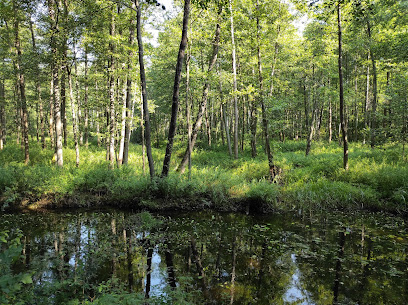
Stara Białowieża
Explore Stara Białowieża, the gateway to Białowieża Forest, a UNESCO World Heritage site rich in biodiversity and natural beauty in Poland.
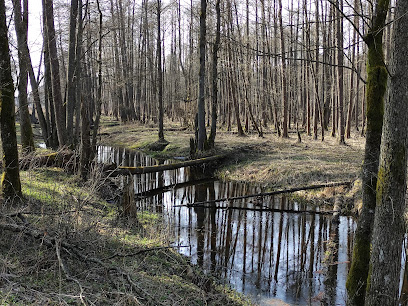
Geometryczny Środek Puszczy Białowieskiej
Experience the intersection of art and nature at Geometryczny Środek Puszczy Białowieskiej, a captivating sculpture in the magical Białowieża Forest.

Obelisk
Explore the majestic Obelisk of Białowieża, a stunning sculpture surrounded by the breathtaking beauty of ancient forests in Poland.

The Białowieża Clearing
Explore the Białowieża Clearing, a UNESCO World Heritage Site rich in biodiversity and history, perfect for nature lovers and adventure seekers.

Viewing shed
Discover the natural wonders of Białowieża at the Viewing Shed, where wildlife observation meets the serene beauty of a UNESCO World Heritage site.

Unmissable attractions to see
Miejsce Mocy
Discover the spiritual heart of Białowieża at Miejsce Mocy, a serene sanctuary steeped in natural beauty and ancient energy.

Skansen Architektury Drewnianej Ludności Ruskiej Podlasia
Explore the rich cultural heritage of Ruthenia at Skansen Architektury Drewnianej Ludności Ruskiej Podlasia, an enchanting open-air museum in Białowieża.
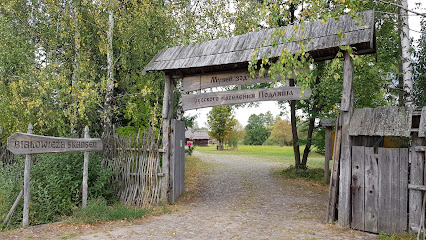
Royal Oak Trail
Explore the natural beauty and serene landscapes of Royal Oak Trail in Białowieża, a must-visit nature preserve for every outdoor enthusiast.

Dworek Gubernatora Grodzieńskiego
Experience the charm and history of Dworek Gubernatora Grodzieńskiego, a stunning landmark in Białowieża surrounded by nature's beauty.

Stara Białowieża
Discover the enchanting Stara Białowieża, a UNESCO World Heritage site known for its lush forests, diverse wildlife, and rich cultural heritage.

Labirynt Białowieża
Explore the magical Labirynt Białowieża: an enchanting garden labyrinth in the heart of Białowieża, perfect for nature lovers and families alike.
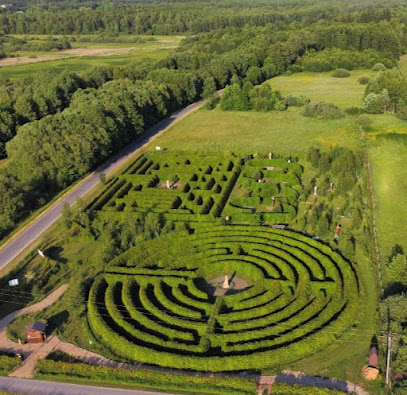
Wysokie Bagno nature reserve
Explore the breathtaking Wysokie Bagno Nature Reserve, a pristine sanctuary in Białowieża, perfect for nature lovers and adventure seekers alike.

Białowieskie Drezyny Rowerowe Polskie Naukowe Towarzystwo Kolejowo Techniczne
Experience the thrill of cycling on railway tracks in the breathtaking Białowieża Forest, a UNESCO World Heritage Site.
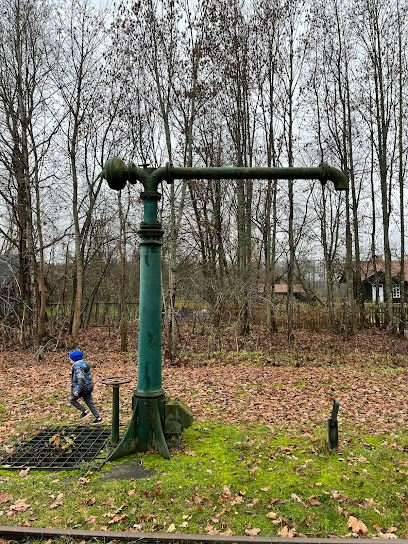
Carska Tropina
Immerse yourself in the natural beauty and rich culture of Carska Tropina, a hidden gem in the heart of Narewka, Poland.

Obelisk
Discover the Obelisk in Białowieża, a stunning tribute immersed in nature and steeped in the rich cultural heritage of Poland's primeval forests.

Ścieżka rekreacyjna
Experience tranquility and nature at Ścieżka Rekreacyjna, a stunning tourist attraction in Białowieża, Poland, perfect for outdoor enthusiasts and nature lovers alike.

The Białowieża Clearing
Discover the breathtaking Białowieża Clearing, a serene haven in the heart of Poland's pristine Białowieża Forest, rich in biodiversity and history.

Meeting place with a guide
Explore the breathtaking Białowieża Forest, a UNESCO World Heritage site rich in biodiversity and ancient beauty, perfect for eco-tourists and nature lovers alike.

Bulwary nad Narewką
Experience tranquility and natural beauty at Bulwary nad Narewką, a picturesque park in Białowieża, perfect for leisurely walks and picnics.

Drewniana brama wejściowa do parku
Discover the breathtaking wooden gateway to Białowieża Park, an enchanting entrance to Europe's last primeval forest filled with wildlife and natural beauty.

Essential places to dine
Restauracja Carska
Savor authentic Polish cuisine in a family-friendly atmosphere at Restauracja Carska in Białowieża.

Restauracja Pokusa
Discover authentic Polish cuisine at Restauracja Pokusa in Białowieża – where tradition meets flavor amidst stunning natural beauty.

GOSPODA POD ŻUBREM
Experience the best of Polish cuisine at GOSPODA POD ŻUBREM in Białowieża - perfect for families seeking delicious meals in a cozy setting.

Babushka Bistro
Experience authentic Eastern European cuisine at Babushka Bistro in Białowieża, where every dish tells a story.

Restauracja Stoczek 1929
Discover authentic Eastern European flavors at Restauracja Stoczek 1929 in Białowieża - where tradition meets culinary excellence.

Bistro „Leśna”
Discover authentic Polish flavors at Bistro „Leśna”, nestled in the heart of Białowieża's breathtaking landscape.

Fanaberia Białowieża
Experience authentic Polish cuisine at Fanaberia Białowieża - where local flavors meet warm hospitality in a stunning natural setting.
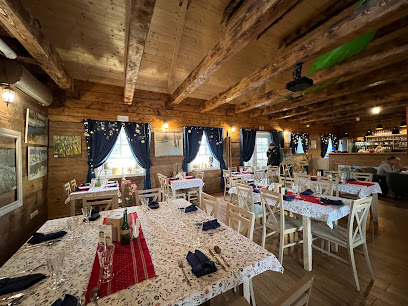
Ostoja
Discover the flavors of Poland at Ostoja in Białowieża, where delicious cuisine meets stunning natural beauty.

Zajazd nad stawami (przy parkingu) Kuchnia Regionalna Dobre Domowe Jedzenie
Experience authentic Polish cuisine at Zajazd nad Stawami in Białowieża - where traditional flavors meet warm hospitality.

ZAJAZD NAD STAWAMI - DANIA KUCHNI REGIONALNEJ
Experience authentic Polish cuisine amidst the breathtaking landscapes of Białowieża at ZAJAZD NAD STAWAMI.

Dzika Malwa
Experience authentic Polish cuisine at Dzika Malwa in Białowieża - where local flavors meet culinary artistry.

Markets, malls and hidden boutiques
Rezerwat Pokazowy Żubrów
Experience the beauty of nature and the grandeur of European bison at Rezerwat Pokazowy Żubrów in Białowieża, a true gem of wildlife conservation.

Białowieża National Park
Discover Białowieża National Park, a UNESCO World Heritage site filled with stunning landscapes, rich biodiversity, and the majestic European bison.

Natural-Forest Museum. Bialowieza National Park
Discover the ecological treasures of Białowieża National Park at the Natural-Forest Museum, where nature and knowledge beautifully intertwine.
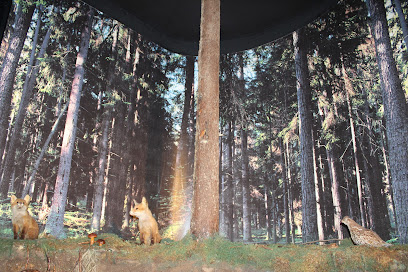
Żebra żubra
Discover the breathtaking landscapes and wildlife of Żebra Żubra in the enchanting Białowieża Forest, a haven for nature lovers and hikers.

Białowieża Forest
Discover Białowieża Forest: Europe's Last Primeval Forest, Home to Majestic Wildlife and Stunning Natural Beauty.

Miejsce Mocy
Explore Miejsce Mocy in Białowieża – a mystical forest destination combining natural beauty with spiritual significance.
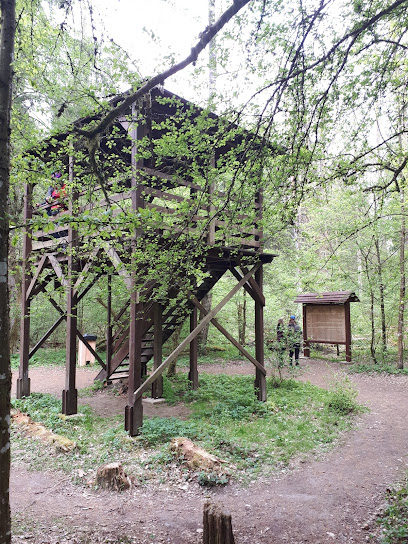
Podolszyńscy. Piekarnia. Podolszyńscy Z., Z., D.
Explore the delightful flavors of traditional Polish baked goods at Podolszyńscy Bakery in Hajnówka, a true gem for food lovers.
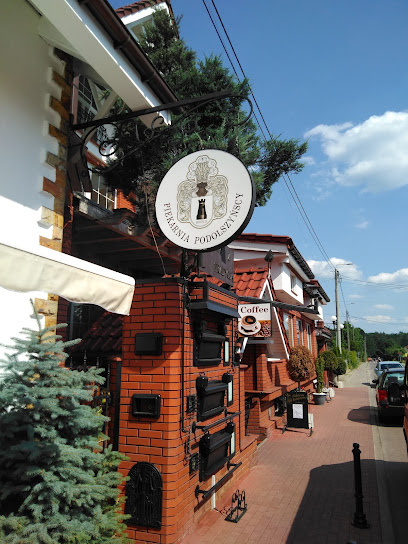
Biedronka
Discover the vibrant shopping scene at Biedronka, Poland's favorite discount supermarket, offering an array of local goods and international products.

Martes Sport
Explore Martes Sport in Hajnówka for top-quality sporting goods and gear, perfect for all your athletic adventures and outdoor activities.

Observation tower
Experience breathtaking views of Białowieża's primeval forest from the Observation Tower, a scenic spot ideal for nature lovers and photographers in Poland.

Royal Oak Trail
Discover the breathtaking beauty of the Royal Oak Trail in Białowieża, a serene nature preserve teeming with ancient trees and diverse wildlife.

Sklep Kresowy Groszek
Explore the finest gourmet grocery store in Hajnówka, offering a delightful array of local delicacies and high-quality products for every palate.

Supermarket Batory
Explore a wide range of products at Supermarket Batory in Hajnówka, where quality meets convenience for every tourist's needs.

Drewutnia
Explore Drewutnia, a charming souvenir store in Białowieża offering unique handicrafts and authentic Polish souvenirs that capture the region's rich culture.

Carska Tropina
Discover the serene beauty of Carska Tropina in Narewka, a must-visit attraction blending nature and culture in Poland.

Essential bars & hidden hideouts
Restauracja Carska
Experience the rich flavors of Polish cuisine in a family-friendly atmosphere at Restauracja Carska, a culinary gem in Białowieża.

Restauracja Pokusa
Discover the authentic taste of Poland at Restauracja Pokusa in Białowieża, where traditional recipes meet warm hospitality.
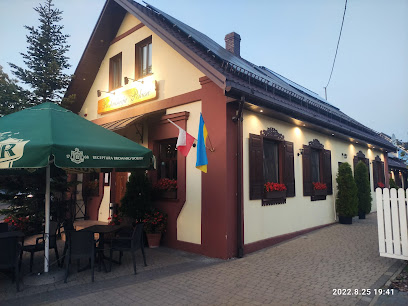
GOSPODA POD ŻUBREM
Discover the family-friendly dining experience at Gospoda Pod Żubrem in Białowieża, offering traditional Polish cuisine in a cozy atmosphere.

Restauracja Stoczek 1929
Experience exquisite Eastern European cuisine at Restauracja Stoczek 1929 in Białowieża, where tradition meets modern culinary artistry.

BIESIADA
Discover BIESIADA, a charming bar in Białowieża, Poland, perfect for relaxing and enjoying local brews after exploring the national park.

Bistro „Leśna”
Discover the authentic taste of Poland at Bistro „Leśna”, where traditional dishes meet a cozy atmosphere in Białowieża.

Pizzeria Siciliana w Białowieży
Experience the best of Italian cuisine at Pizzeria Siciliana in Białowieża, where every bite takes you on a flavorful journey.

Fanaberia Białowieża
Explore the flavors of Białowieża at Fanaberia, where local ingredients meet Polish culinary traditions in a cozy setting.

Ostoja
Discover the flavors of Poland at Ostoja, a charming restaurant and guest house nestled in the enchanting Białowieża region.

Olsik
Discover the flavors of Białowieża at Olsik, a restaurant and farmstay serving authentic Polish cuisine in a serene natural setting.

Zajazd nad stawami (przy parkingu) Kuchnia Regionalna Dobre Domowe Jedzenie
Discover authentic regional cuisine in the heart of Białowieża at Zajazd nad stawami, where home-cooked flavors meet a charming atmosphere.

Zajeździk Ostatni Grosz
Experience the charm of Zajeździk Ostatni Grosz in Topiło, a delightful restaurant offering health food, events, and cozy accommodations.

Polana Żubra
Discover the authentic taste of Poland at Polana Żubra, where culinary delights meet a cozy ambiance in the heart of Pogorzelce.

ZAJAZD NAD STAWAMI - DANIA KUCHNI REGIONALNEJ
Savor authentic Polish cuisine amidst the serene beauty of Białowieża at Zajazd Nad Stawami, a cozy lounge for food lovers.

Restauracja CARSKA KOMNATA, sala bankietowa, konferencje, integracja
Experience the flavors of traditional Polish cuisine in the heart of Narewka at Restauracja CARSKA KOMNATA, a perfect spot for all occasions.

Local Phrases about Białowieża Forest
-
- HelloCześć
[cheh-shch] - GoodbyeDo widzenia
[doh vee-dzen-ya] - YesTak
[tahk] - NoNie
[nyeh] - Please/You're welcomeProszę
[pro-sheh] - Thank youDziękuję
[jen-koo-yeh] - Excuse me/SorryPrzepraszam
[psheh-prah-sham] - How are you?Jak się masz?
[yahk syeh mahsh] - Fine. And you?Dobrze. A ty?
[doh-bzeh ah tih] - Do you speak English?Czy mówisz po angielsku?
[chi moo-vish poh ahn-gyehl-skoo] - I don't understandNie rozumiem
[nyeh roh-zoo-myem]
- HelloCześć
-
- I'd like to see the menu, pleaseChciałbym zobaczyć menu, proszę
[h-chaow-bim zoh-bah-chich meh-noo, pro-sheh] - I don't eat meatNie jem mięsa
[nyeh yem myen-sa] - Cheers!Na zdrowie!
[nah zdrov-yeh] - I would like to pay, pleaseChciałbym zapłacić, proszę
[h-chaow-bim zah-plah-cheech, pro-sheh]
- I'd like to see the menu, pleaseChciałbym zobaczyć menu, proszę
-
- Help!Pomocy!
[poh-moh-tsi] - Go away!Idź sobie!
[eed-sh soh-bye] - Call the Police!Zadzwoń po policję!
[zahd-vohn poh poh-leets-yeh] - Call a doctor!Zadzwoń po doktora!
[zahd-vohn poh dohk-toh-rah] - I'm lostZgubiłem się
[zgoo-bi-wehm syeh] - I'm illJestem chory
[yeh-stem hoh-ri]
- Help!Pomocy!
-
- I'd like to buy...Chciałbym kupić...
[h-chaow-bim koo-pich] - I'm just lookingTylko się rozglądam
[tih-koh syeh rohz-gwah-dam] - How much is it?Ile to kosztuje?
[ee-leh toh kohs-too-yeh] - That's too expensiveTo jest za drogie
[toh yest zah dro-geh] - Can you lower the price?Czy możesz obniżyć cenę?
[chi moo-zhesh ohb-nee-zhich tseh-neh]
- I'd like to buy...Chciałbym kupić...
-
- What time is it?Która jest godzina?
[k-toh-rah yest goh-dzee-nah] - It's one o'clockJest pierwsza
[yest pyehr-vshah] - Half past (10)Pół do jedenastej
[poow do yeh-neh-nahs-teh-y] - MorningRano
[rah-no] - AfternoonPopołudnie
[poh-poo-wood-nyeh] - EveningWieczór
[vyeh-choor] - YesterdayWczoraj
[v-choh-rye] - TodayDziś
[jeesh] - TomorrowJutro
[yoo-tro] - 1Jeden
[yeh-den] - 2Dwa
[dvah] - 3Trzy
[tshih] - 4Cztery
[ch-teh-ri] - 5Pięć
[pyench] - 6Sześć
[shesh-ch] - 7Siedem
[shye-dehm] - 8Osiem
[oh-shyem] - 9Dziewięć
[dzyeh-vyench] - 10Dziesięć
[dzyeh-shyench]
- What time is it?Która jest godzina?
-
- Where's a/the...?Gdzie jest...
[gdzyeh yest] - What's the address?Jaki jest adres?
[yah-ki yest ah-dresh] - Can you show me (on the map)?Czy możesz mi pokazać (na mapie)?
[chi moo-zhesh mee poh-kah-zatch (nah mah-pyeh)] - When's the next (bus)?Kiedy jest następny (autobus)?
[kyeh-dih yest nah-stehp-nih (ow-toh-boos)] - A ticket (to ....)Bilet (do ...)
[bee-leht (doh)]
- Where's a/the...?Gdzie jest...
History of Białowieża Forest
-
Białowieża Forest is one of the last and largest remaining parts of the immense primeval forest that once stretched across the European Plain. Its history dates back thousands of years, with evidence suggesting that humans have been interacting with the forest since prehistoric times. The forest has remained largely untouched, preserving a unique ecosystem that has fascinated naturalists for centuries.
-
During the medieval period, the forest became a royal hunting reserve for the Polish and Lithuanian nobility. The Jagiellonian dynasty, which ruled Poland and Lithuania, established regulations to preserve the forest's wildlife, particularly the European bison, known as the wisent. This period marked the beginning of formal conservation efforts, making Białowieża one of the oldest protected areas in Europe.
-
In the late 18th century, Poland was partitioned by its neighbors, and Białowieża Forest came under Russian control. The Russian Tsars continued the tradition of using the forest as a hunting ground. Tsar Alexander II built a palace in the village of Białowieża, and the forest was managed by Russian foresters who continued to protect its unique flora and fauna.
-
Białowieża Forest experienced significant upheaval during the 20th century. During World War I, the forest was occupied by German forces, who exploited its resources. After the war, the Treaty of Versailles placed the forest under Polish control. However, during World War II, Białowieża was again occupied, this time by both Soviet and Nazi forces, leading to extensive logging and destruction. Despite this, parts of the forest remained relatively undisturbed.
-
After World War II, Białowieża Forest was divided between Poland and the Soviet Union (now Belarus). Efforts to conserve the forest intensified, leading to the establishment of Białowieża National Park in Poland in 1947. This park became a UNESCO World Heritage Site in 1979, recognized for its exceptional biodiversity and the successful reintroduction of the European bison.
-
In recent decades, Białowieża Forest has become a symbol of conservation and biodiversity. It attracts scientists, tourists, and nature enthusiasts from around the world. Modern challenges include balancing conservation efforts with local economic needs and addressing threats such as illegal logging and climate change. The forest remains a testament to the enduring relationship between humans and nature.
Białowieża Forest Essentials
-
Białowieża Forest is located in northeastern Poland, near the border with Belarus. The nearest major city is Białystok, approximately 85 kilometers away. The most convenient way to reach Białowieża is to fly into Warsaw Chopin Airport, which is about 240 kilometers from the forest. From Warsaw, you can take a train to Białystok, which takes around 2.5 hours. From Białystok, you can catch a bus or rent a car to drive to Białowieża, which takes about 1.5 hours.
-
Within Białowieża Forest, walking and cycling are popular modes of transportation due to the area's extensive network of trails. For longer distances, local buses connect the villages within the forest. Taxis are also available but can be expensive. Renting a car is a convenient option if you plan to explore the surrounding areas. Keep in mind that some parts of the forest are restricted and can only be accessed with a guide.
-
The official currency in Poland is the Polish Zloty (PLN). Credit cards are widely accepted in hotels, restaurants, and shops within Białowieża and nearby villages. However, it's advisable to carry some cash, especially when visiting more remote areas or smaller establishments. ATMs are available in Białowieża village, but it's a good idea to withdraw sufficient cash before heading deep into the forest.
-
Białowieża Forest is generally a safe destination for tourists. However, standard safety precautions should be taken. Avoid wandering off marked trails and always follow guidelines provided by local authorities or guides. There are no high-crime areas targeting tourists, but it's always wise to stay vigilant and keep your belongings secure, especially in crowded places or during events.
-
In case of an emergency, dial 112, the European emergency number, for immediate assistance. Medical facilities are available in Białowieża village, and more comprehensive medical services can be found in Białystok. It is highly recommended to have travel insurance that covers medical emergencies. For minor health issues, there are pharmacies in Białowieża where you can purchase over-the-counter medications.
-
Fashion: Do wear comfortable and weather-appropriate clothing, especially if you plan to hike. Avoid wearing overly flashy or revealing clothing. Religion: Do respect local customs if you visit religious sites. Dress modestly and remain quiet and respectful. Public Transport: Do be courteous and offer your seat to elderly passengers. Don't eat or drink on public transport. Greetings: Do greet people with a friendly 'Dzień dobry' (Good day) and a handshake. Eating & Drinking: Do try local dishes and accept food offerings graciously. Don't refuse hospitality, as it is considered impolite.
-
To experience Białowieża Forest like a local, consider joining a guided tour led by a local expert. This is a great way to learn about the unique flora and fauna of the forest. Visit the Białowieża National Park to see the famous European bison. Engage with locals in the village to learn about regional traditions and history. Don't miss the chance to try local delicacies such as pierogi and bigos at a traditional Polish restaurant. For a unique experience, consider staying in a local guesthouse or agritourism farm to get a taste of rural life in the region.
Nearby Cities to Białowieża Forest
-
Things To Do in Suwalki
-
Things To Do in Lublin
-
Things To Do in Warsaw
-
Things To Do in Marijampolė
-
Things To Do in Radom
-
Things To Do in Olsztyn
-
Things To Do in Kaunas
-
Things To Do in Vilnius
-
Things To Do in Lutsk
-
Things To Do in Jonava
-
Things To Do in Kielce
-
Things To Do in Lodz
-
Things To Do in Rzeszow
-
Things To Do in Lviv
-
Things To Do in Elblag











